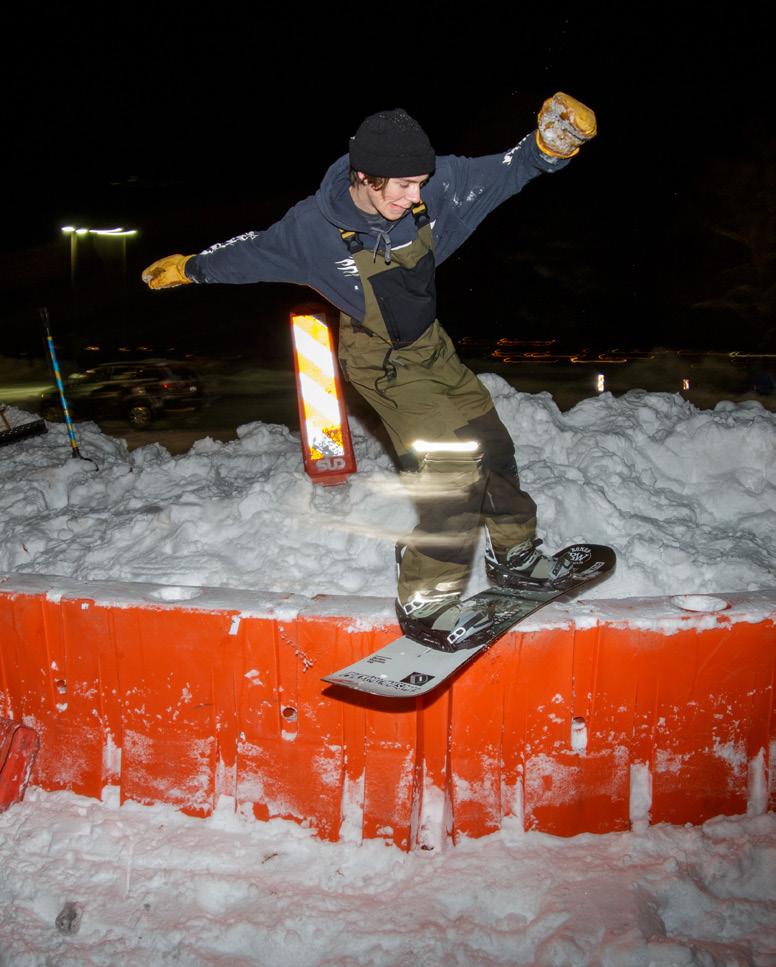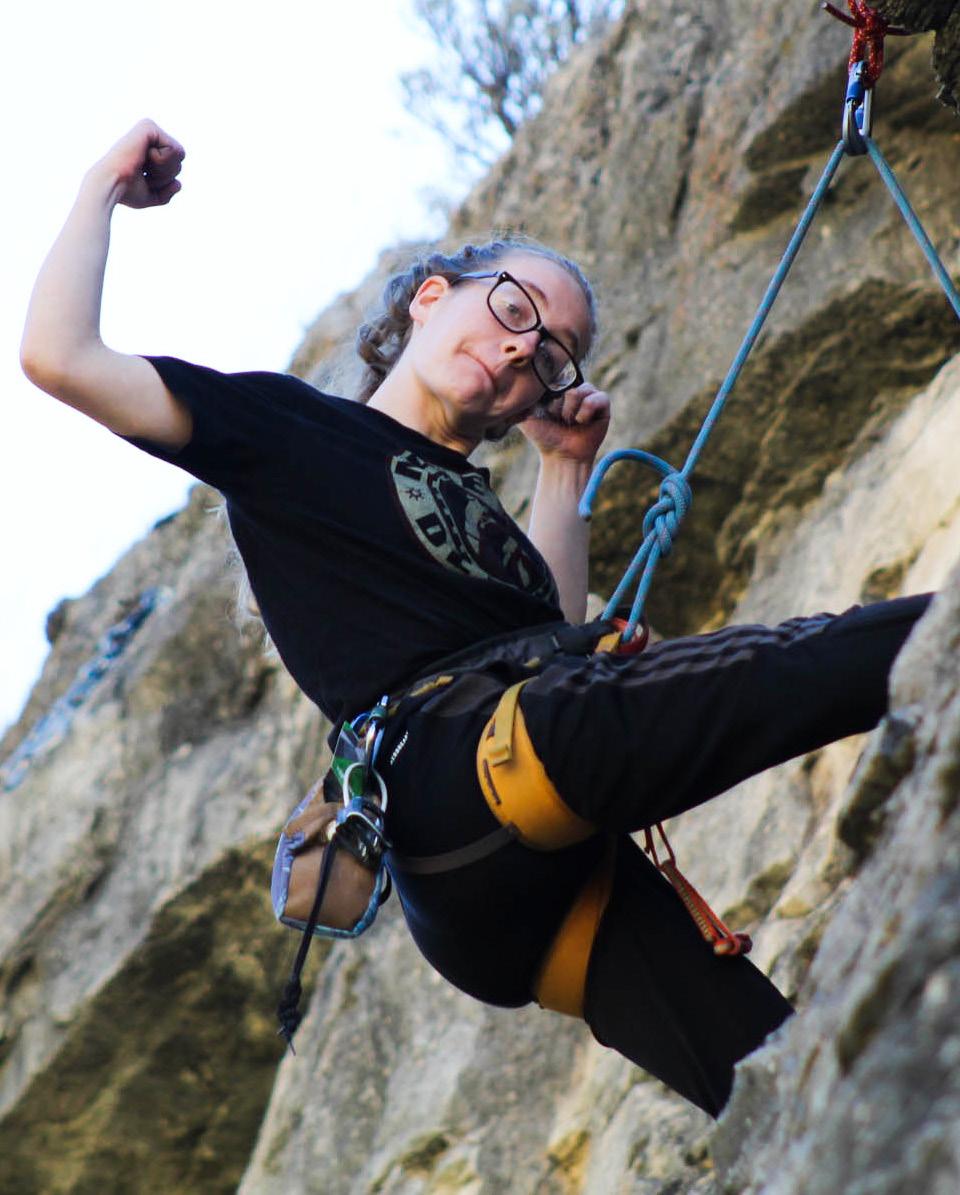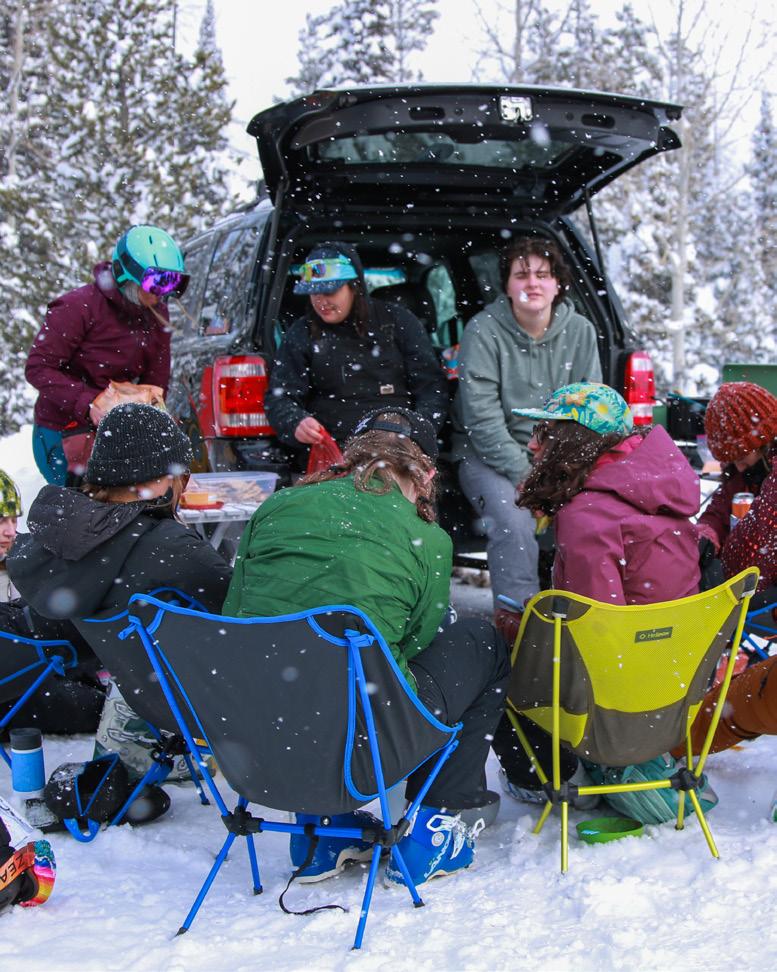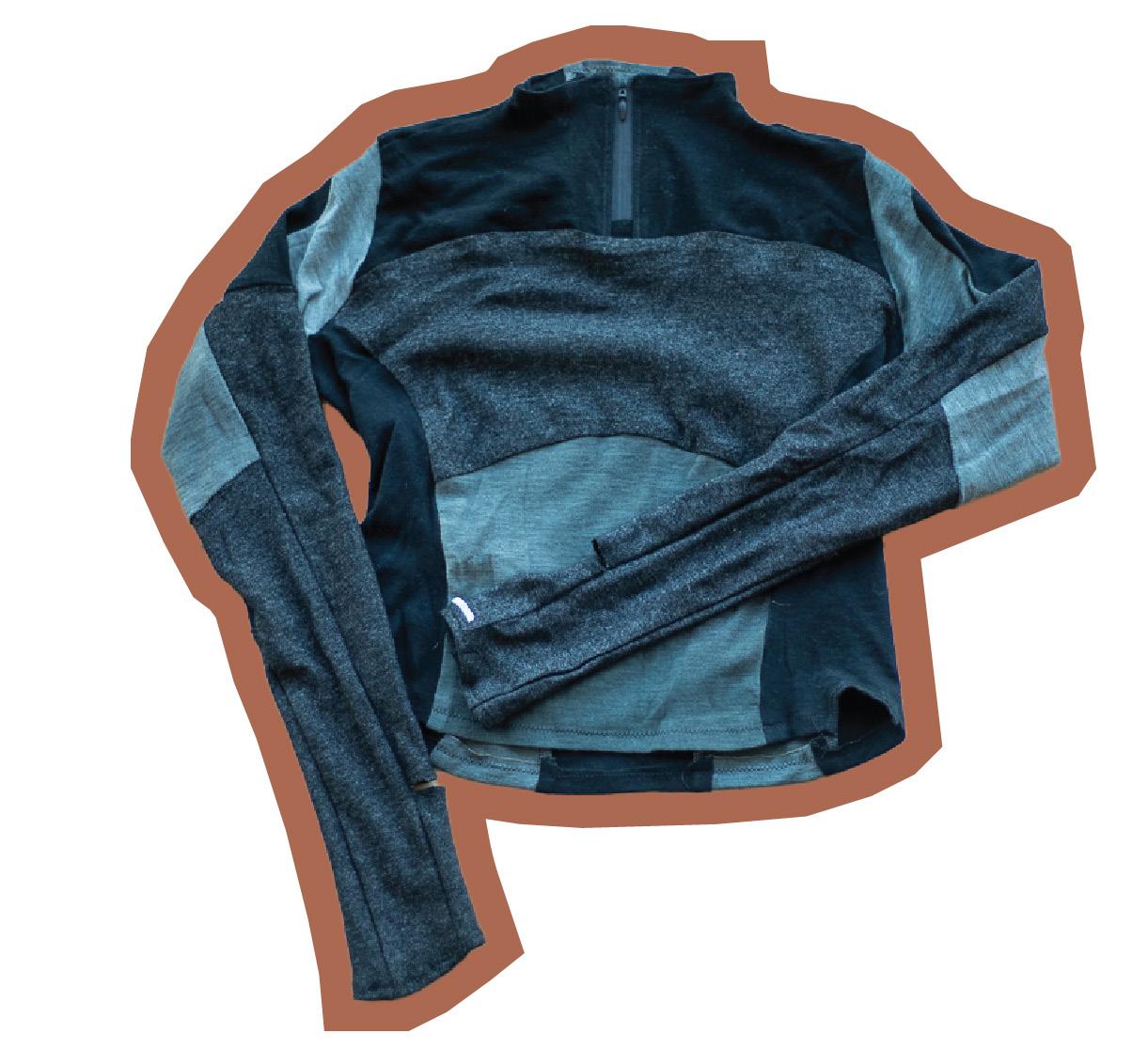
6 minute read
Merino wool and heat mapping: Student recognized internationally for innovative design
Julie Lamarra, an assistant professor of practice in OPDD, mentored Dorrance while he researched, designed and created his base layer set.
Lamarra said the competition is unique because it is a global call. Students from all over the world can apply, as long as they are in a design-situated curriculum or a college program signed up as an affiliate of the challenge.
Along with support from Lamarra and other professors in the department, Dorrance received materials from New Wool, a company based out of New Zealand. The company sent him three different blends of wool and gave him a discounted price.
The project took a lot of work, and sometimes, he was working in the lab until 3 a.m. Dorrance said he gave it all he had with the resources available — if he hadn’t put in the effort, he wouldn’t have gotten where he did.
The project also required a lot of revisions. Dorrance said he completely redesigned his pieces three times.
Out of 1,200 submissions, Dorrance placed in the top ten. There were four finalists from the U.S., with others coming from the UK and Italy.
The finalists’ trip to Munich took place the week in November 2022.
“We did get to have a dinner with some big designers and people in the industry,” Dorrance said. “I’ve met people in person that I had only had the experience of following on Instagram, and seeing them in person was very validating. It kind of gave me the sense of maybe I had a shot to get where I wanted to go.”
The program officially began in the fall of 2015 and has had four graduating classes.
“At its core, it’s a design program, focused on helping students learn how to develop physical goods,” Anderson said. “Everything from performance clothing to soft goods and equipment. We make anything that you can hold in your hand — physical products. But at the core of the program is sustainability and performance.”
Lamarra said there are three tracks within the program: product line management, design or development.
The first two years of the program are set up as a pre-professional program, with courses to help students familiarize themselves with all aspects of the three tracks. In the spring semester of their sophomore year, students can then apply for matriculation into the professional program for the last two years.
To apply for the professional program, students have to have received a C grade or better in all pre-professional courses. They also must submit a portfolio based on a rubric put together by the faculty.
Jack Dorrance, a Utah State University student from Chicago, created a base layer for endurance trail runners using thermal mapping of the human body. He designed a top and a pair of shorts that landed him in the top 10 of an international design challenge, earning him a trip to Munich, Germany.
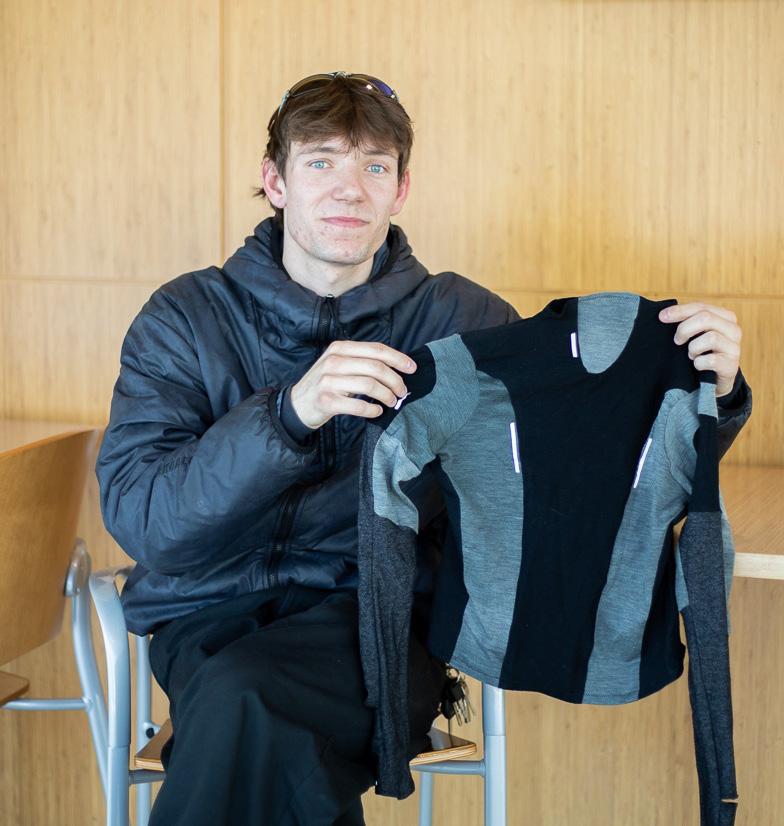
Dorrance is a senior studying outdoor product design and development. He said he came to USU specifically for the OPDD program.
“I was reading an outdoor magazine, and they did a little bit of a report on the program because it was so cutting edge at the time,” Dorrance said. “I think they hadn’t even graduated their first class yet, because this is four years ago, and I just sent it and came here.”
Dorrance entered his design in the 2022 Woolmark Performance Challenge and was selected as a finalist.
The Woolmark Performance Challenge is a competition for design students that partners with a different company every year. Applicants are prompted to design something out of merino wool for a specific purpose.
“Jack was really interested in it because the challenge partnered with Salomon as the main collaborator, and the design brief was to incorporate wool into a piece or pieces, head to toe kit, for high alpine ultra runners for a specific ultramarathon,” Lamarra said.
The ultramarathon design brief was based around the Tor des Géants, a 205-mile endurance trail race in Aosta Valley, Italy.
Dorrance focused on heat mapping of the human body and did his own personal research, approved through the USU Institutional Review Board, in order to create a pattern for his pieces.
“I created a paneling map based on the heat production of either the male or female body, then applied different thicknesses of Merino and different blends based on the amount of heat that was produced in that area,” Dorrance said. “So my whole goal was basically to create a base layer where all the heat released around that area was even and relative to the area itself, hopefully giving a hypothetical trail runner a more efficient and comfortable piece of clothing.”
Dorrance said the OPDD program at USU is one of the only programs of its kind in the U.S. There is a master’s program at the University of Oregon that is similar, but there are no other undergraduate programs like it.
Chase Anderson, the program coordinator for the OPDD department, said they offer a fouryear undergraduate bachelor of science degree.
“We had a faculty member here who worked in the family consumer sciences department program. She had friends in the outdoor industry, and she recognized the need for a program to train the next generation of product designers for the outdoor industry,” Anderson said. “She had some initial conversations with people in the industry, and then put together an initial list of courses, and then presented that to the university and initiated the formal process to create a new program. So, at the time, there was nothing else like it. It’s the first of its kind.”
“We review the portfolios as a faculty and then come together and discuss who’s coming into the professional program and what track are they going to be placed in for their last two years,” Lamarra said.
Lamarra said within each of the three tracks, students can narrow their focus even more to any genre within the outdoor industry. These focuses include watersports, snow sports, fishing, hiking and rock climbing.
“Once you get up to the upper division levels, you’re really able to diverge and really focus on what you came here for,” Dorrance said. “My focus was apparel-based.”
In the last two years of the program, students can take theory and creative courses, as opposed to the more compared to the more technical, skill-based courses of the first two years.
“In these last two years, they also get a lot more face time with industry professionals,” Lamarra said. “I have really nice relationships and partnerships with industry affiliates that will actually come into our classroom for a few of my classes at midterm and at their final presentations and give critical feedback to our students.”
Dorrance is the first student from the program to enter the competition, but Lamarra said she knows of at least one student interested in entering this year.
“She’s going into it with, like, a very open mind in designing for this specific problem in this challenge, but it changes every year,” Lamarra said. “We’ll hope to get into the top 10 again.”
This year, the partnership is with Luna Rossa Prada Pirelli. Students will be challenged to create a uniform for a team that races high-speed yachts.
Anderson said Dorrance’s success with the challenge and his product is not only validating and important for him, but also for the program as a whole.
“It’s really validating — showing that we can compete,” Anderson said. “We’re training students who can have an impact and do something really meaningful. Upon graduation or even prior to graduation, it’s really amazing to see that what we’re teaching in the classroom translates, and it’s being recognized by people internationally.”
When Dorrance came to USU and started in the program, his goal was to end up at a design firm after graduation — to be able to solve problems and make life easier for people through his designs.
Because of the competition and the portfolio he has put together in his time at USU, Dorrance has a few prospects for design jobs after his graduation.


“I’m more than where I wanted to be,” Dorrance said. “I’m very dumbfounded. It doesn’t feel real, it is very crazy. Post-graduation, I’m hoping to work for a design firm or a design studio and really just doing that — going in every day working towards a goal.”
Lamarra said Dorrance’s success and example have encouraged other students within the program to work harder and set higher expectations for themselves.
“With someone like Jack who is really self-motivated and really wants to excel, he was willing to listen to my critique and to really hone into what I was saying,” Lamarra said. “He wasn’t afraid to ask questions and he went for it full on. He went for it. We’re not striving for perfection, we’re striving for excellence, and every time he came in, he was raising that bar of excellence up and up and up.”



